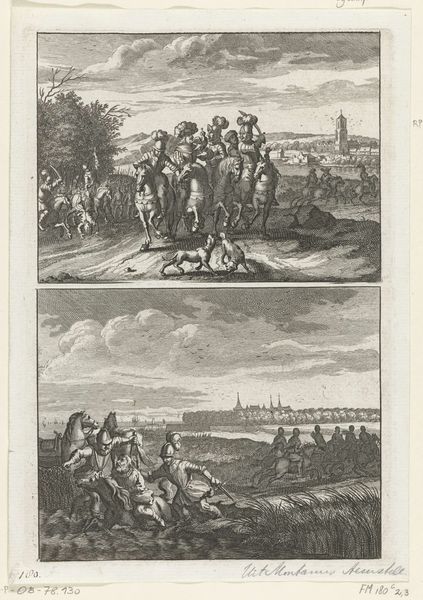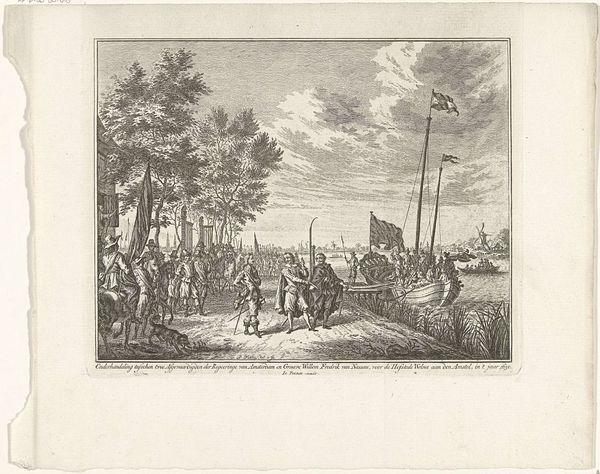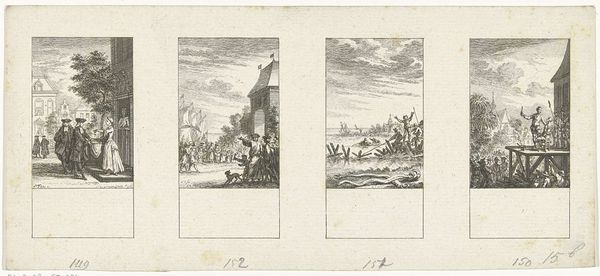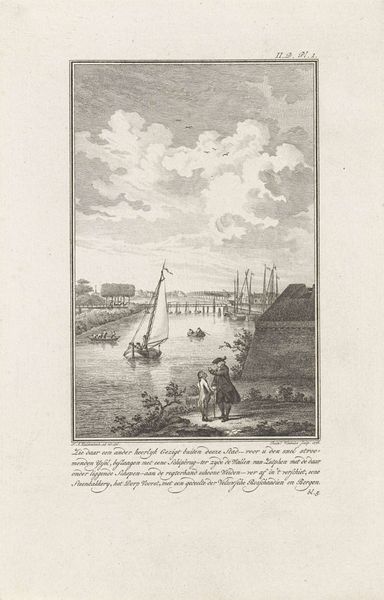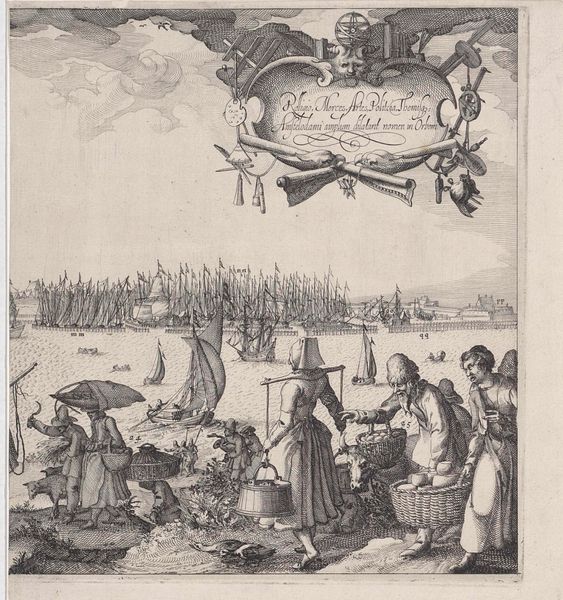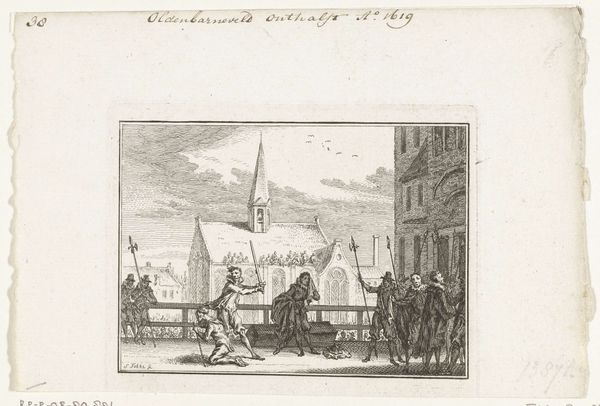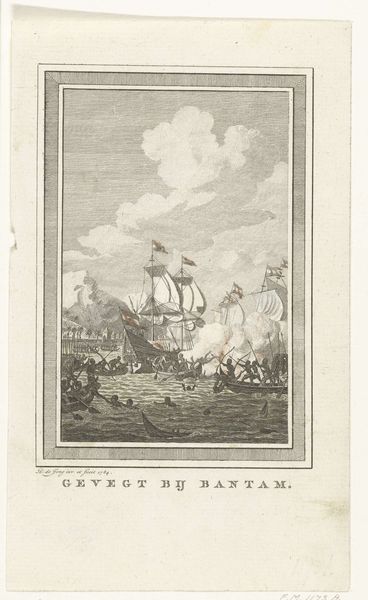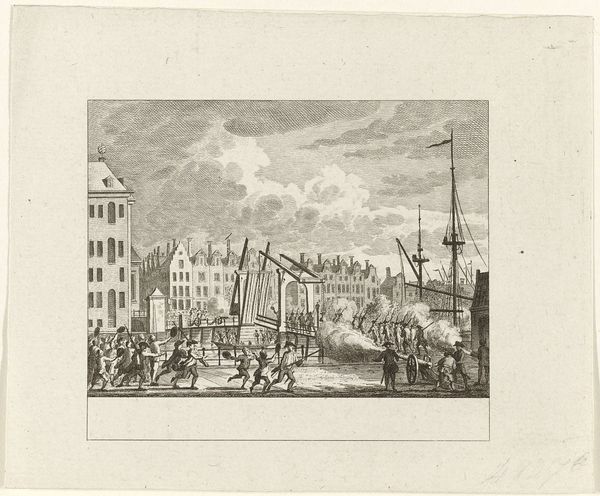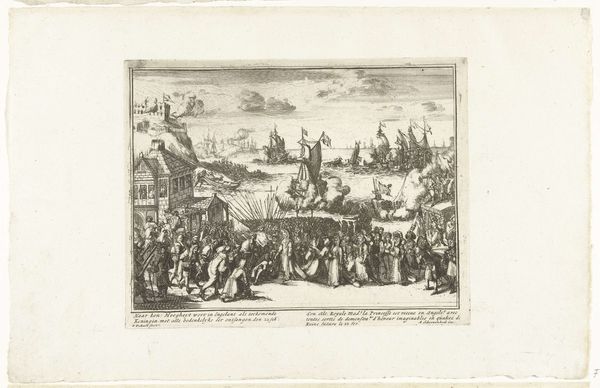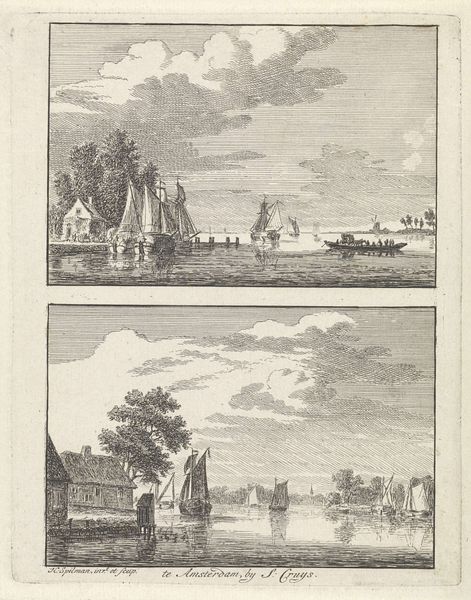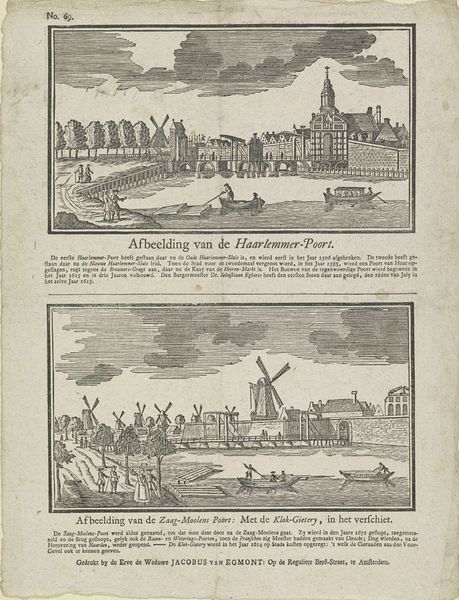
Schipbreuk van het oorlogsschip Huis in 't Bosch voor de kust van Marokko en de terugkeer van de bemanning uit slavernij, 1751-1753 1753 - 1754
0:00
0:00
print, engraving
#
comic strip sketch
#
aged paper
#
light pencil work
#
narrative-art
#
baroque
# print
#
old engraving style
#
sketch book
#
landscape
#
personal sketchbook
#
sketchwork
#
sketchbook drawing
#
cityscape
#
history-painting
#
storyboard and sketchbook work
#
sketchbook art
#
engraving
Dimensions: height 162 mm, width 105 mm
Copyright: Rijks Museum: Open Domain
Editor: This is "Schipbreuk van het oorlogsschip Huis in 't Bosch voor de kust van Marokko en de terugkeer van de bemanning uit slavernij, 1751-1753," made around 1753-1754 by Simon Fokke. It's an engraving, and the layout, with the two distinct scenes, almost feels like a graphic novel. What do you see in this piece, beyond just a historical record? Curator: It's crucial to look beyond the surface and ask: whose story is being centered, and how is it being told? We see the shipwreck and the "rescue" – but rescue into what kind of society? The narrative presents a triumphant return, yet we must consider the context of Dutch maritime power, colonialism, and its reliance on enslaved labor. Editor: That's interesting; I hadn’t really considered the broader implications. Curator: Consider how the artist emphasizes the arrival in Amsterdam. What systems are these "rescued" sailors re-entering? Were they beneficiaries or victims of a system deeply implicated in the exploitation of others? This artwork, then, becomes less about individual triumph and more about a complex web of power. We also have to consider how "captivity narratives" were circulated and consumed in Europe and bolstered particular racialized imaginaries of both Europeans and non-Europeans. What assumptions does the artwork expect viewers to bring to it? Editor: So, you’re saying we need to think about this image not just as a record of a specific event, but also as a reflection of the social and political power dynamics of the time. Curator: Exactly. By questioning whose perspectives are prioritized and understanding the economic underpinnings of the Dutch Golden Age, we can critically examine the values this image promotes. Editor: Wow, I'll definitely be looking at art with a new lens now. Thanks! Curator: My pleasure. Engaging with art is not just about aesthetics; it is also about excavating difficult truths.
Comments
No comments
Be the first to comment and join the conversation on the ultimate creative platform.
